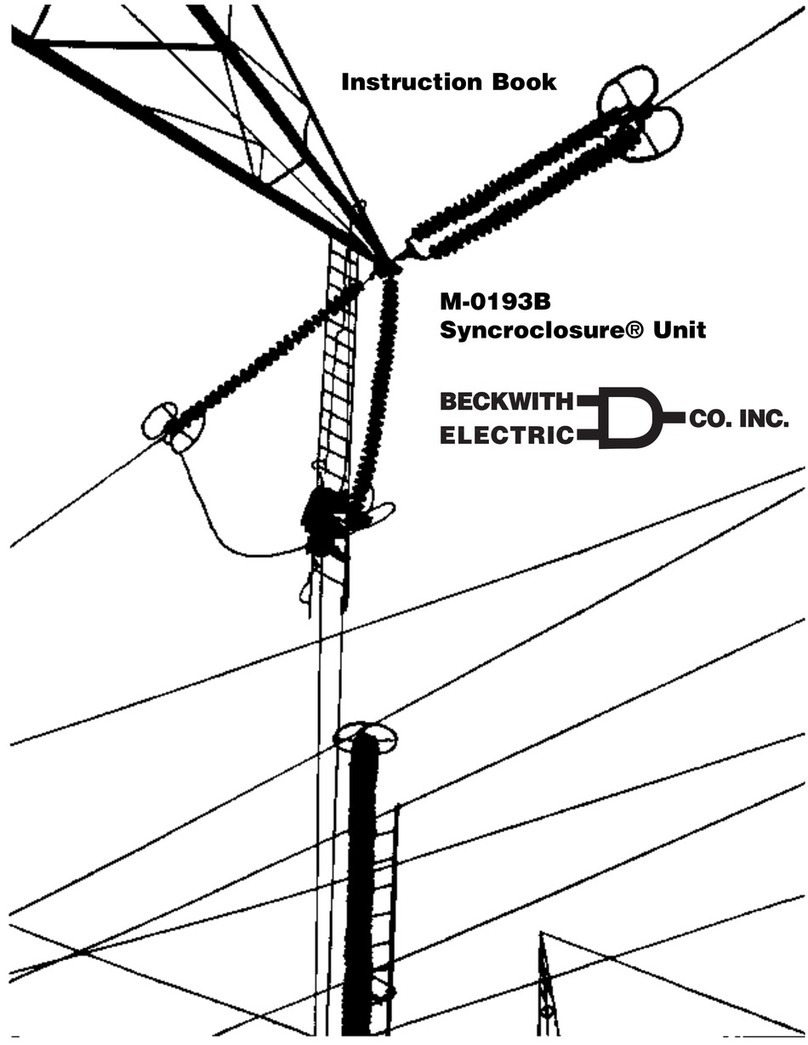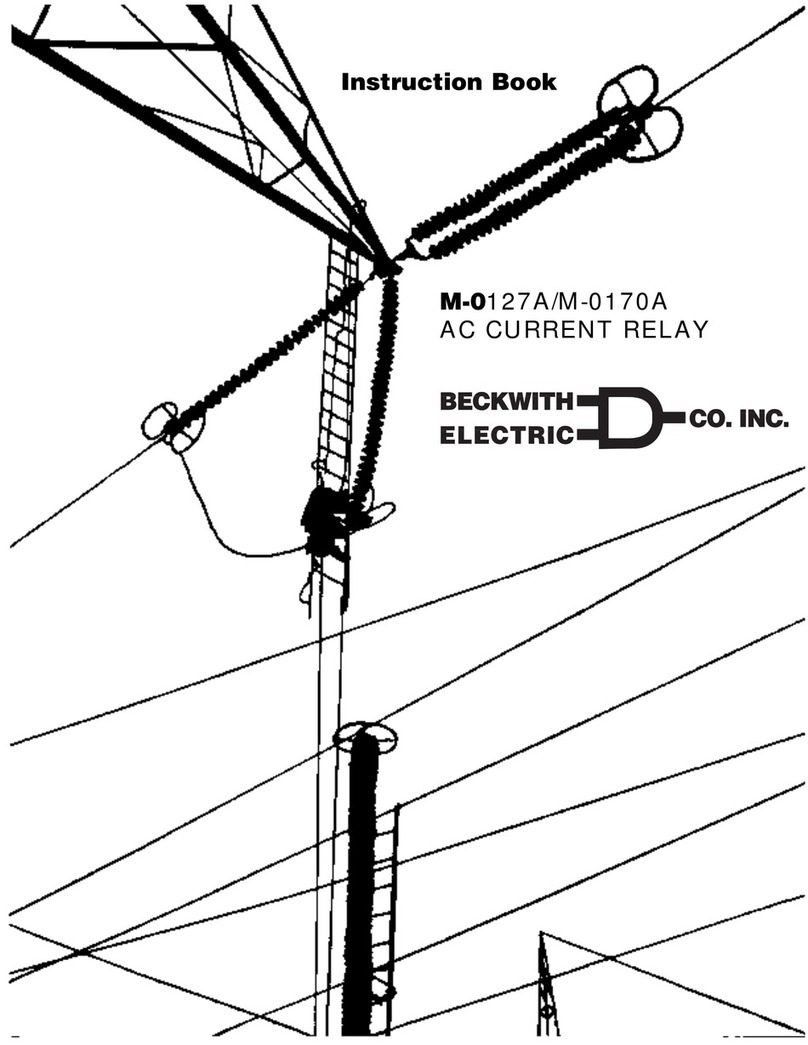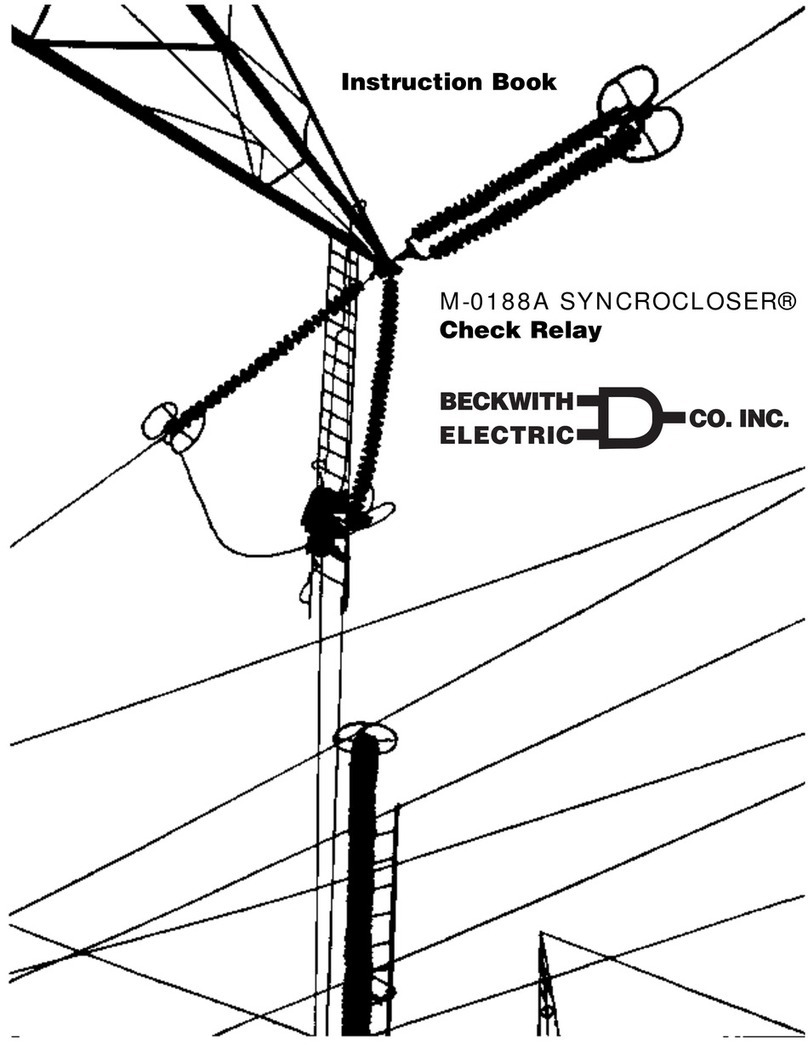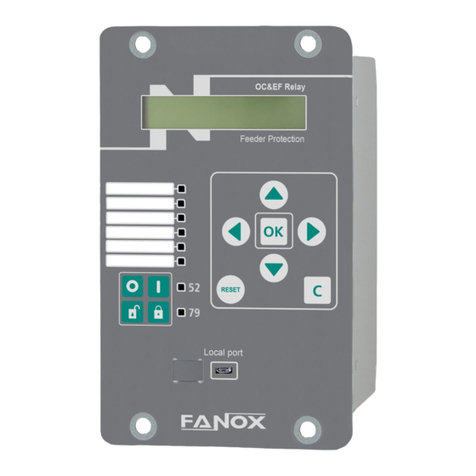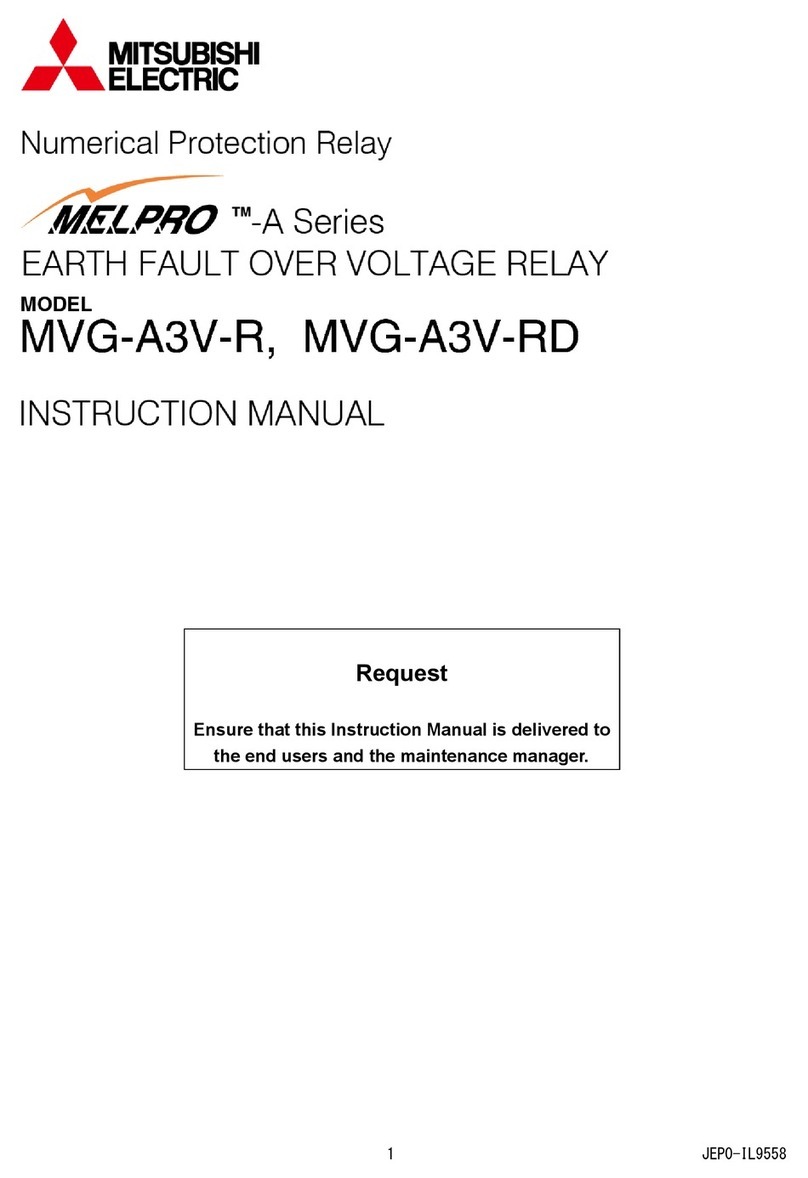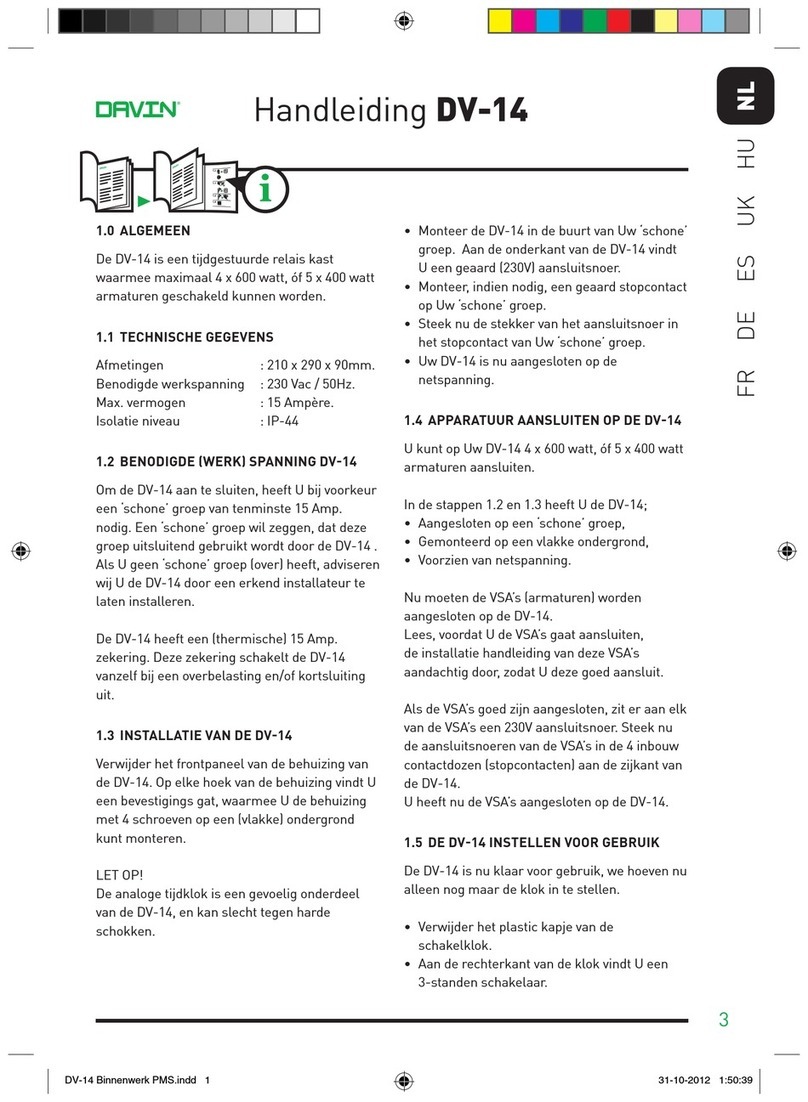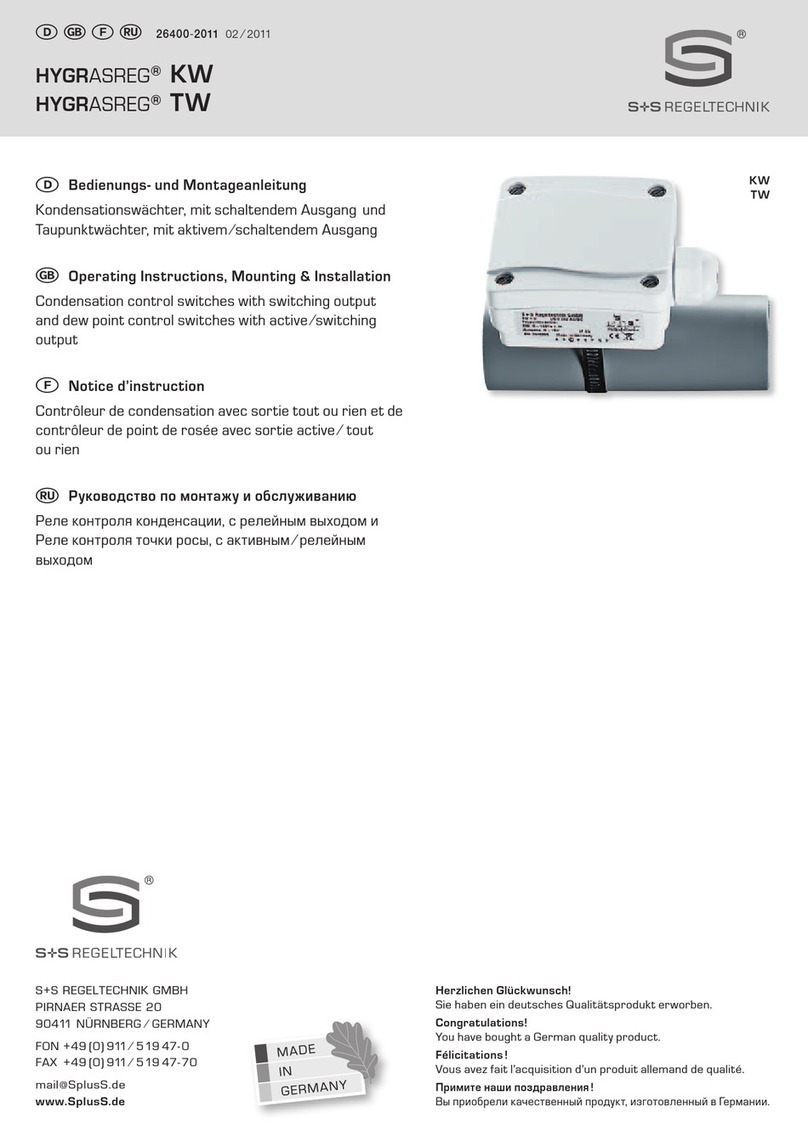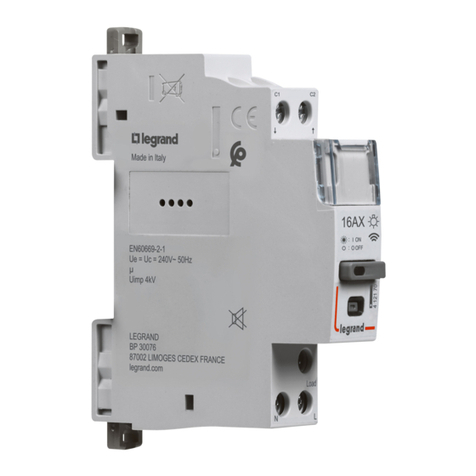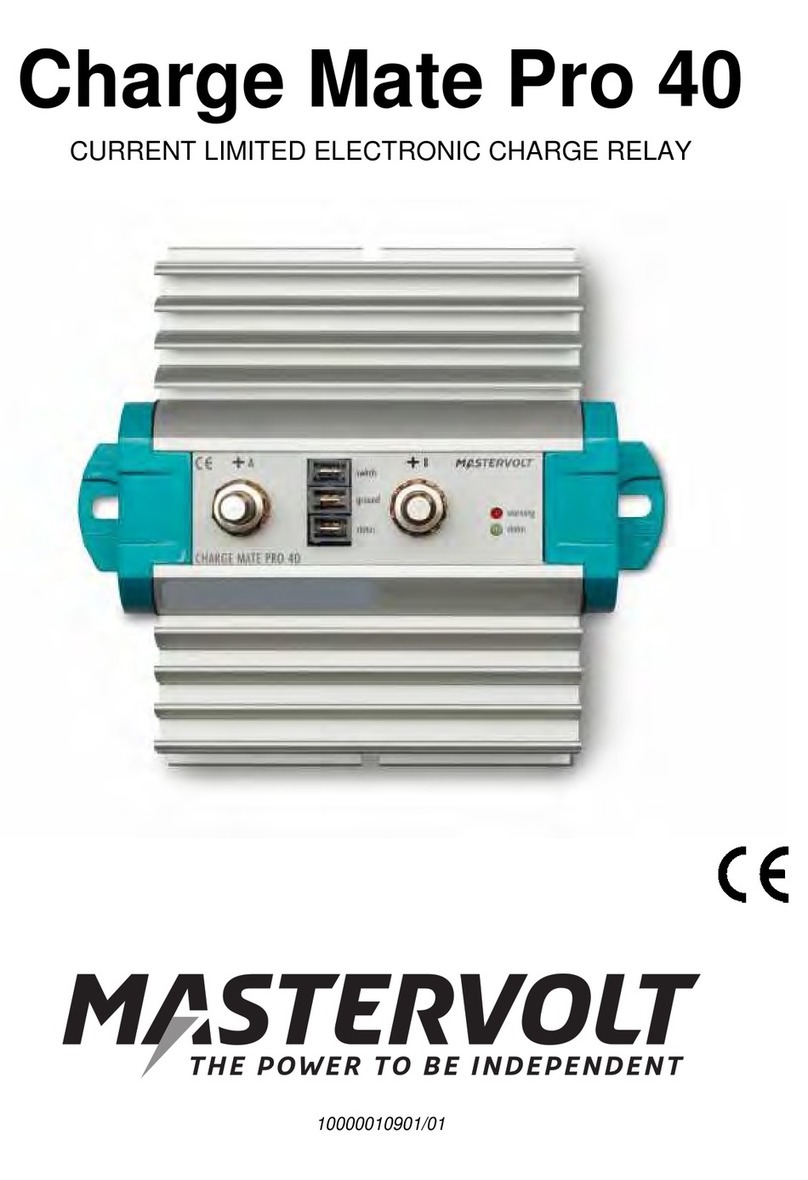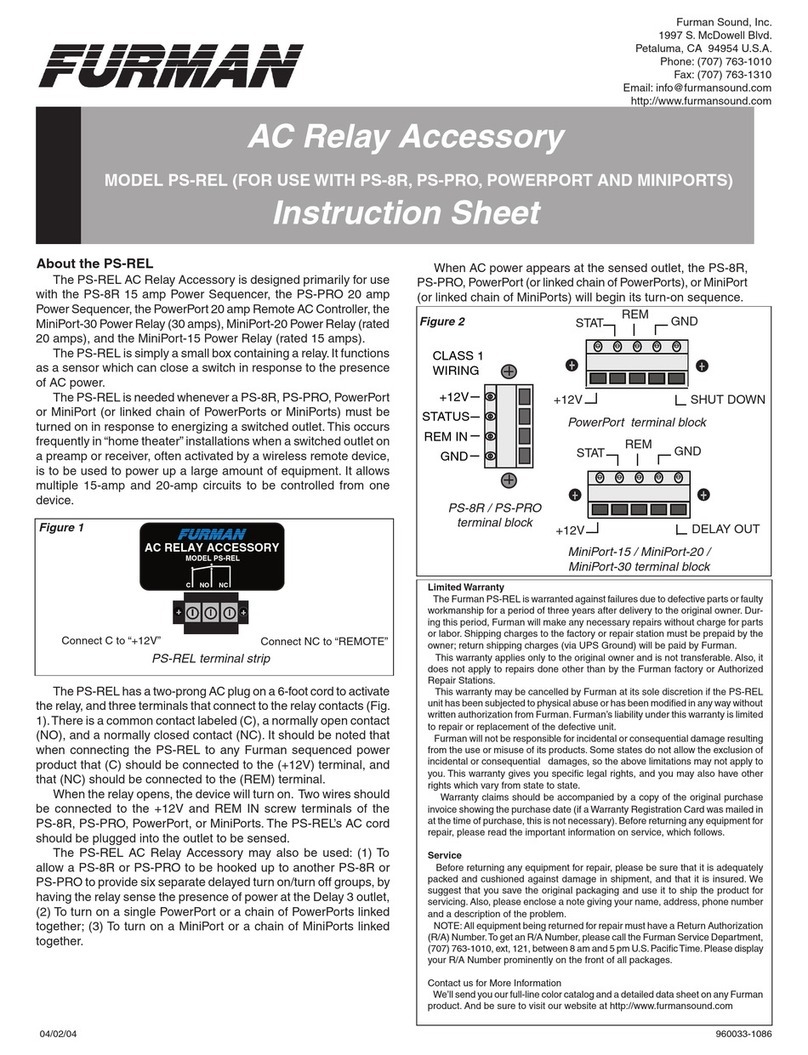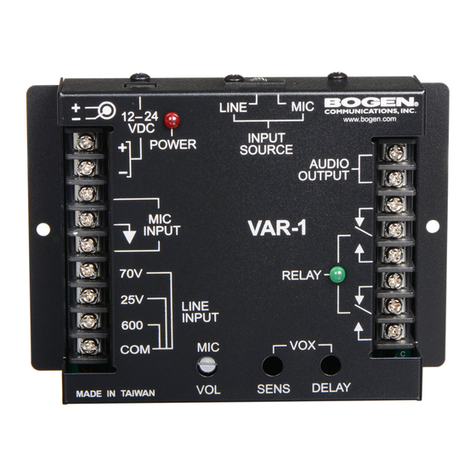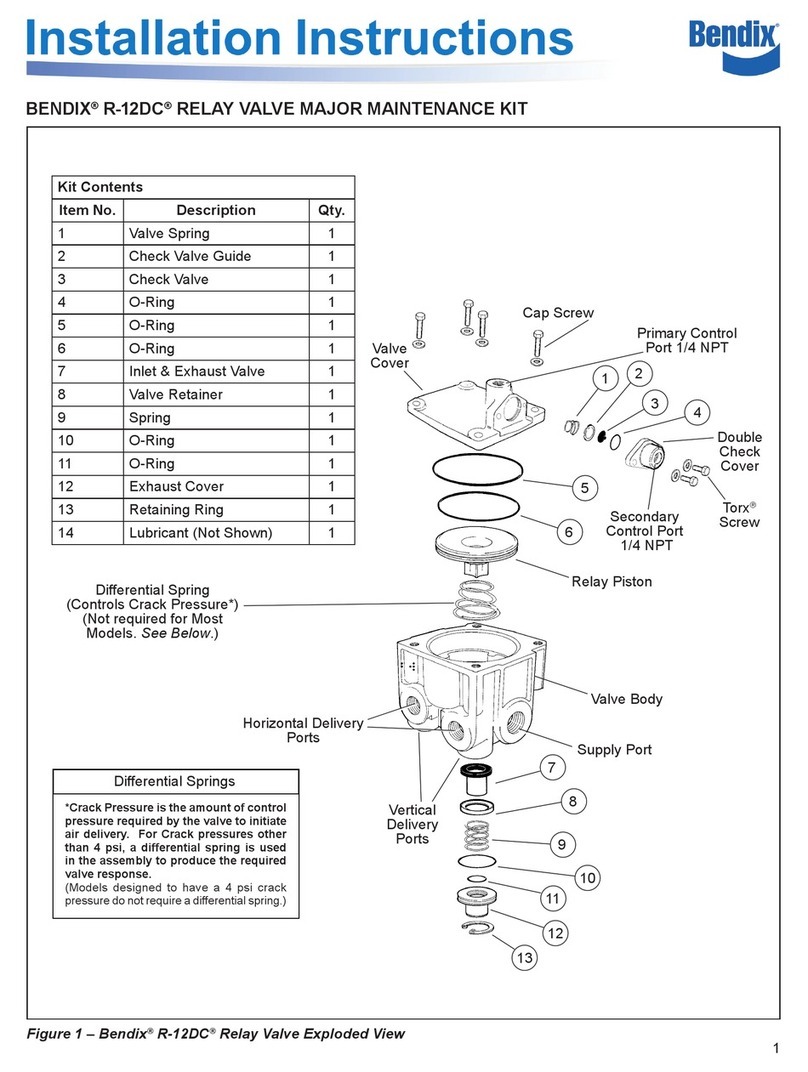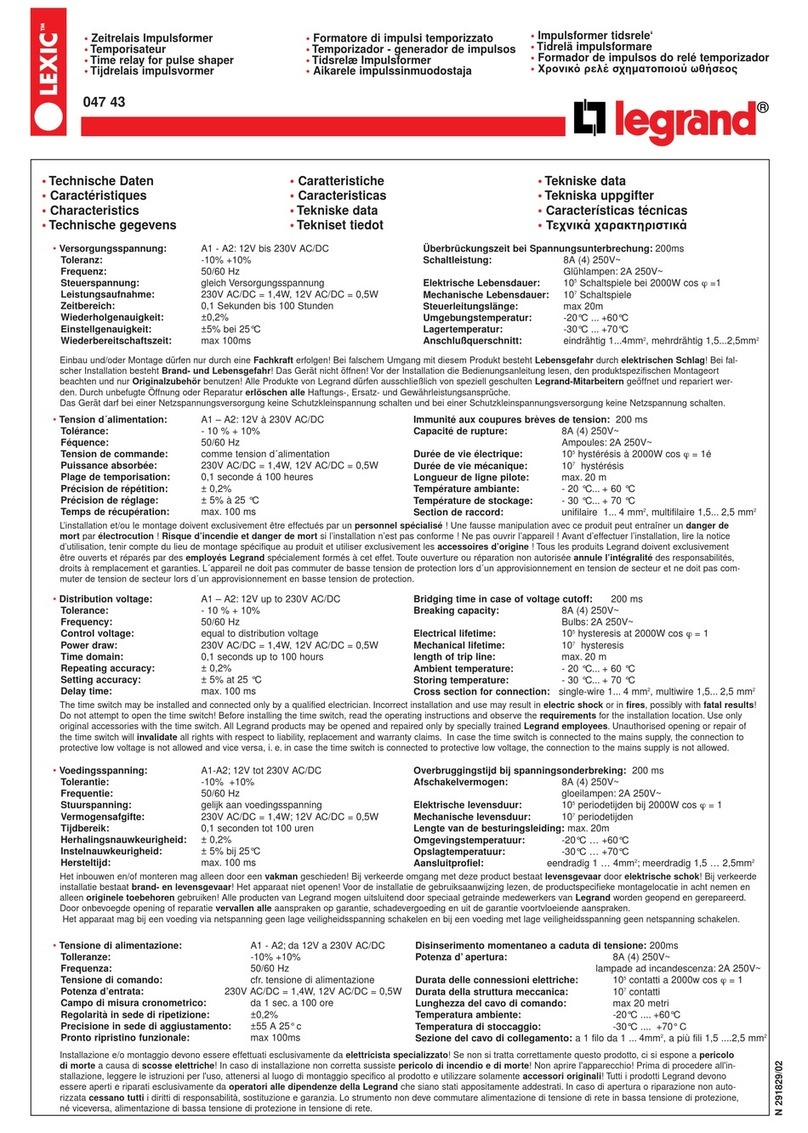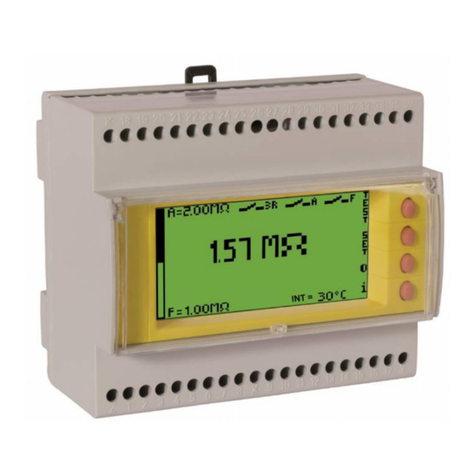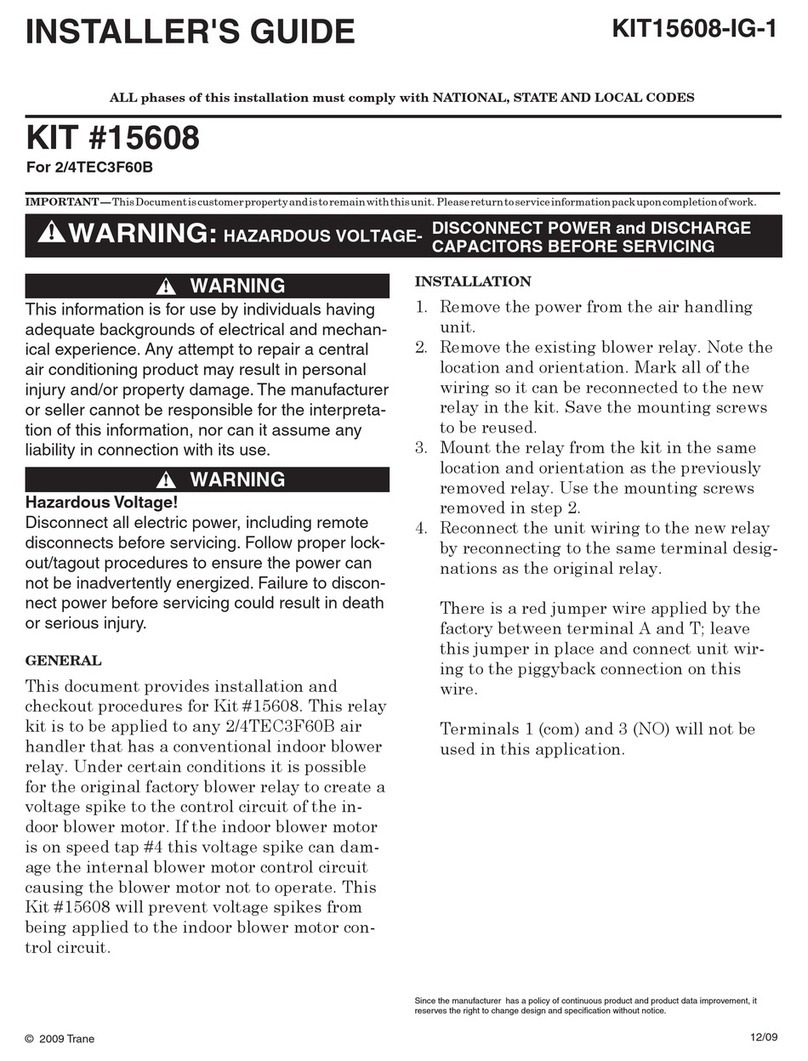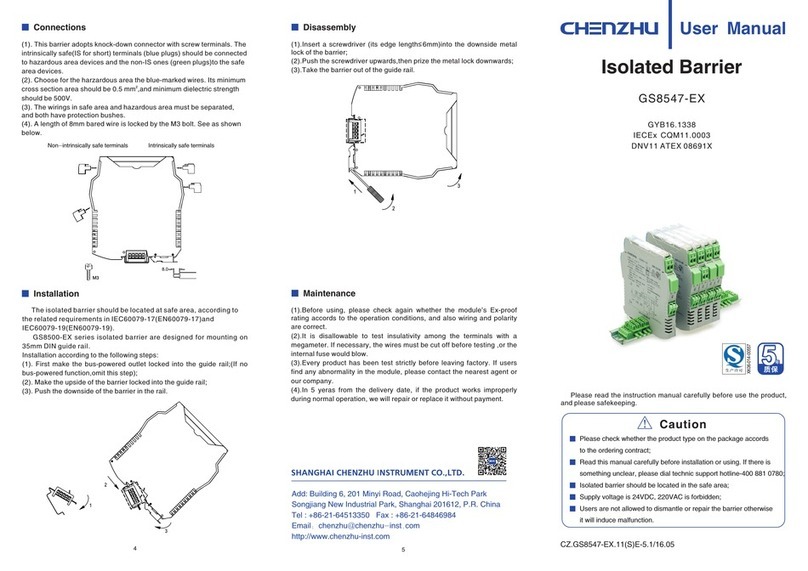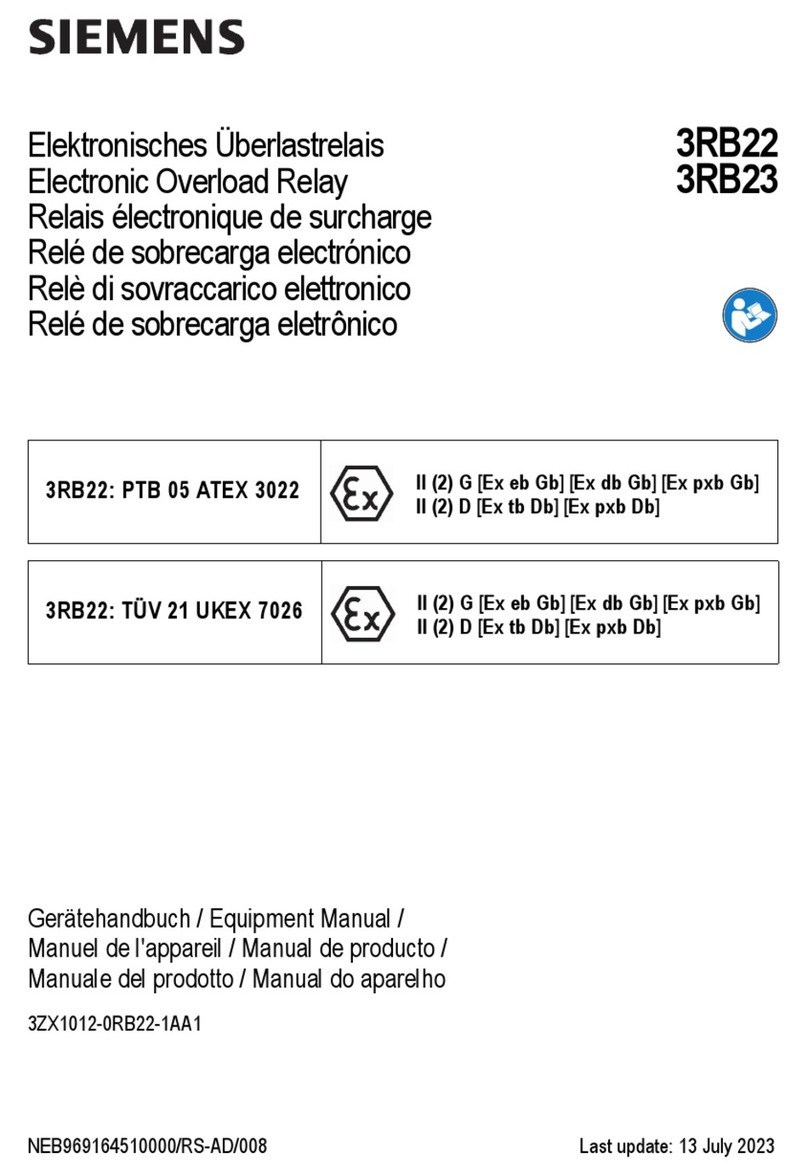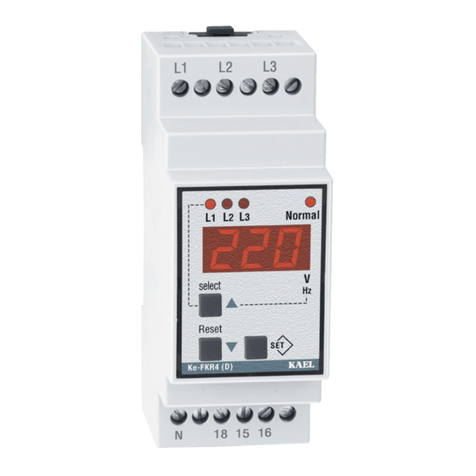
–1–
1.0 Introduction
The Beckwith Electric M-0245C is a solid-state device
specifically designed to respond to changes in the
phase angle between two input voltages. When the
line voltage input is within the UPPER and LOWER
VOLTAGE LIMIT dial settings, and the phase angle
between the line voltage and the motor bus voltage is
less than that set on the PHASE ANGLE LIMIT dial,
the device will permit breaker closing. If the phase
angle exceeds the control setting, the device will
block closing within one cycle; i.e., if the limit is 30°,
the unit will inhibit closing within one cycle of the time
when the phase angle exceeds 30°. If the phase
angle returns within the 30° limit, the unit will enable
closing within one cycle.
Using advanced, state of the art semiconductors and
circuits, the Beckwith Electric M-0245C achieves an
overall stability and resolution unattainable with other
techniques. Modern hybrid and monolithic
semiconductors are used to gain temperature stability
without critical compensation or trimming. Unique,
patented circuitry allows precise phase measurement
over a wide range of frequency, voltage and
temperature; while operating within ±1% of the
theoretical speed limit for phase measurement.
2.0 Theory of Operation
Refer to Figure 1, Block Diagram. Each input (Motor
Bus, Line) is passed through a transformer and scaled
down from 120 V ac to 6 V ac. If variable speed motor
control is used on the motor bus, the variable speed
motor application option should be specified, which
places a dual channel low pass active filter after each
input transformer. This eliminates false zero crossing
triggering due to commutated bus voltage waveforms.
The scaled down voltages are converted into dc
voltages by the Ac to Dc Converters. These converters
are active full-wave rectifiers and filters that eliminate
the diode drop typical of conventional full-wave
rectifiers, which are highly temperature-dependent.
Full-wave rectification was chosen over half-wave
rectification because the filter response time is much
faster for a given ripple voltage. This is due to the fact
that full-wave rectification contains no fundamental
frequency components, only harmonics. The Upper
and Lower Voltage Comparitors compare the output
of the Ac to Dc Converter to a portion of a highly
stable hybrid 10 V reference. LEDs located on the
front panel indicate the condition of the Line voltage
with reference to the UPPER and LOWER VOLTAGE
LIMIT settings.
Two Zero-Crossing Detectors generate rectangular
waveforms at the zero crossing of each input. A logic
gate provides a pulse width that is proportional to the
phase difference between each input, which is then
integrated and sampled each half cycle of the highest
frequency input. This sampled voltage is an accurate
measure of the phase difference and is updated
once every 8.3 ms. The sampled voltage varies from
0 to +10 V for a phase difference change of 0 to
±180°. The sampled phase voltage is compared to
the extremely stable hybrid voltage reference. The
compared signal is an indication of the phase
difference with reference to the front panel PHASE
ANGLE LIMIT setting. Rear terminal TB1-5 allows
external monitoring of the phase difference sampled
voltage, referenced as “Phase Angle Analog Output.”
Power is provided by the Power Supply, which
supplies ±24 V dc, ±15 V dc and the precision 10 V
reference used for comparison. The supply is
designed to operate from 108 V ac to 132 V ac input
and is electrically isolated from all other inputs and
outputs. The Logic Network monitors all functions
including power supply voltages. Upon receiving a
logic “1” from the enable input and the appropriate
logic conditions from the Phase Angle, Upper Voltage,
and Lower Voltage Comparitors; the Logic Network
outputs a breaker close signal to the Breaker Close
Network. Terminals A and B are electrically shorted
by the Breaker Close Network until one of the
controlling logic conditions is false or logic “1.”
Motor Bus Undervoltage Monitor
The Motor Bus Undervoltage Detector will disable
the relay if the voltage decays below 25% during a
bus transfer sequence. This will ensure that the phase
measurement circuitry does not misoperate during a
low voltage condition.
Input Loss Protection
The M-0245C has been designed with an Input Loss
Detector circuit to minimize the possibility of the output
contacts closing due to sudden loss of the VT input
sources. The M-0245C output contact is forced to
the normally open state for any of the following
conditions:
1. Sudden drop in the line V.T. voltage
magnitude.
2. Sudden drop in the bus V.T. voltage
magnitude.
3. Bus V.T. voltage less than 0.25%.
4. Rate of change of phase, as detected by
the M-0245C circuitry, is greater than
2900°/sec. (8 Hz frequency difference).




















